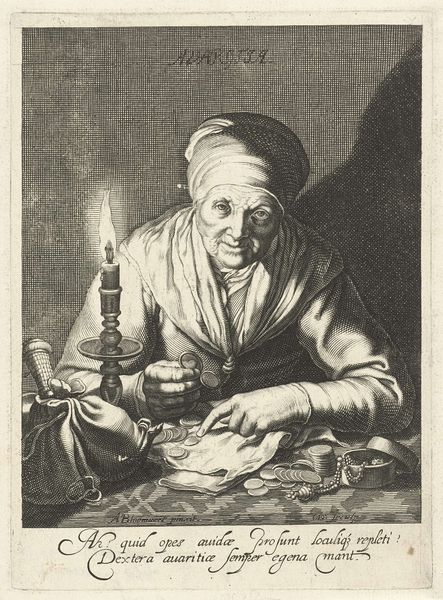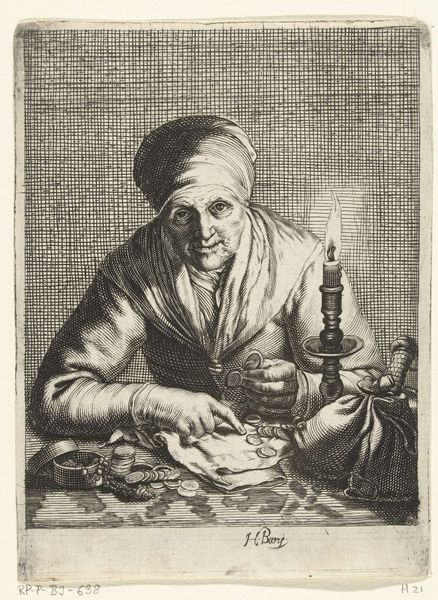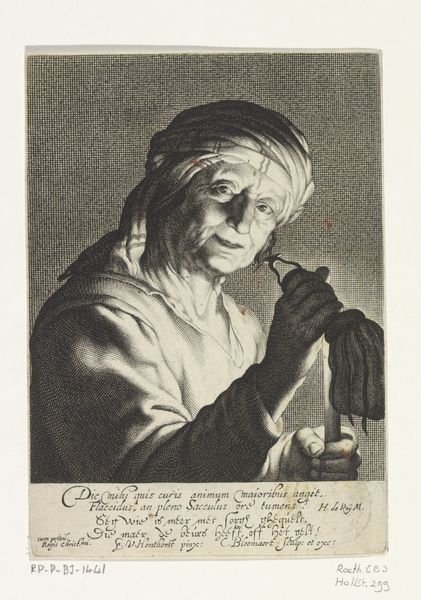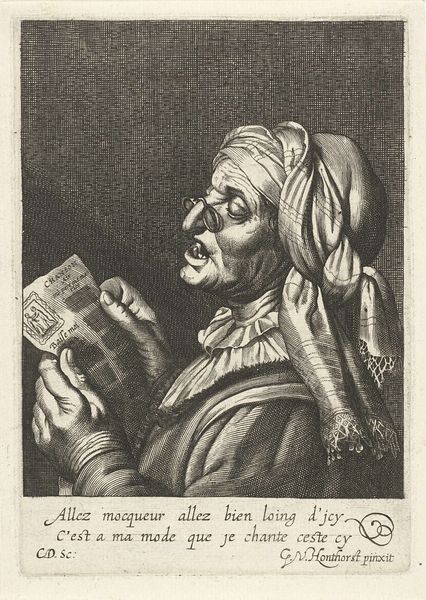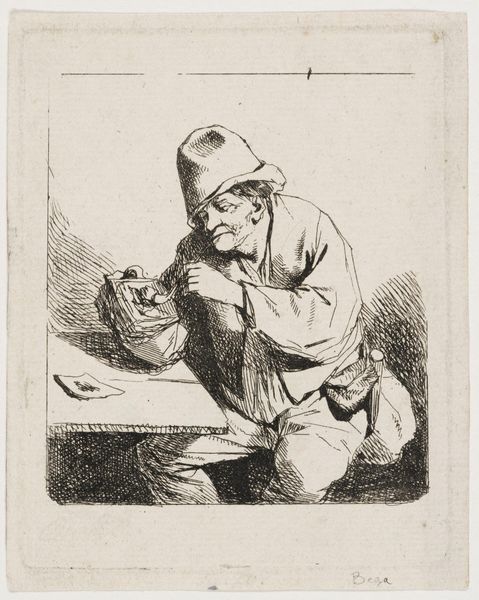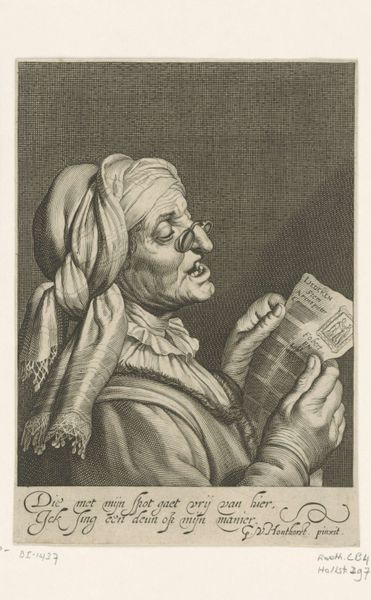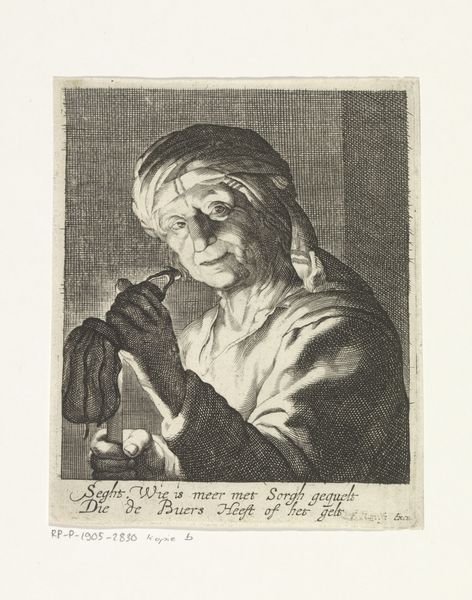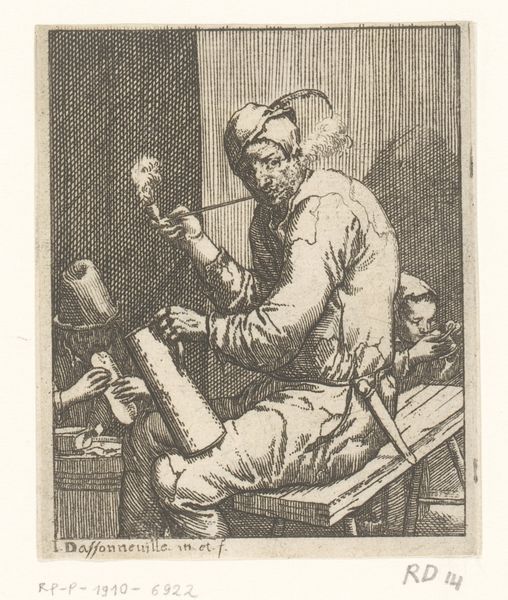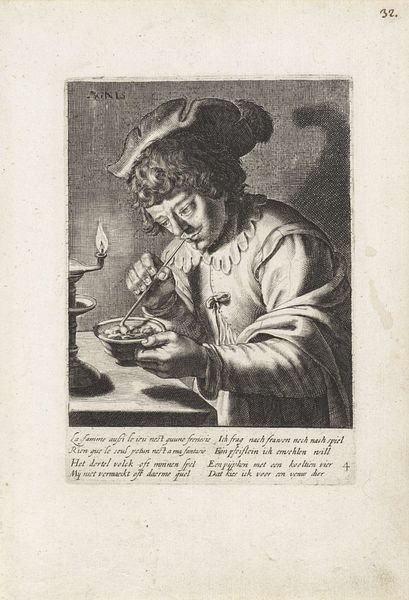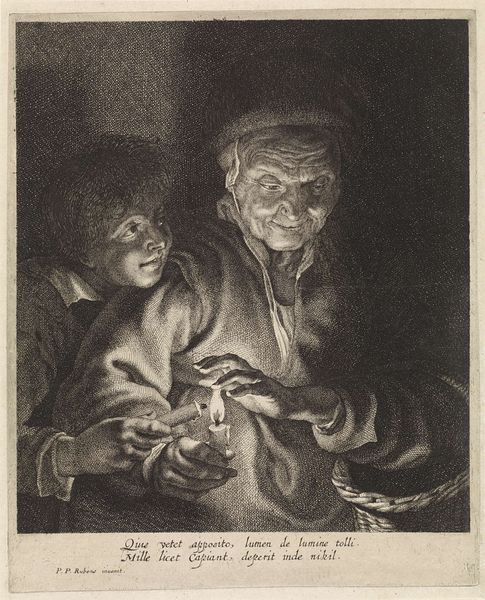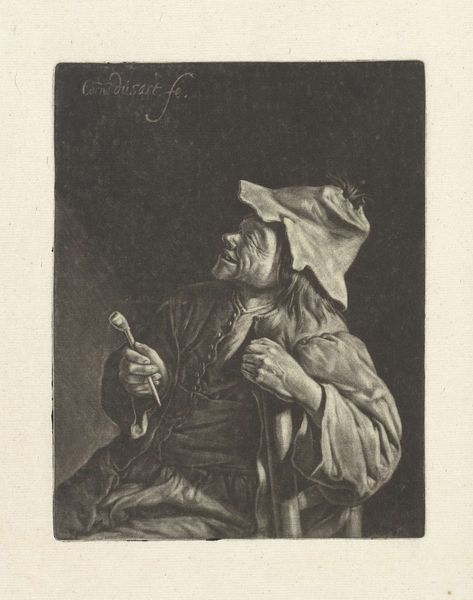
engraving
#
portrait
#
baroque
#
caricature
#
caricature
#
genre-painting
#
engraving
Dimensions: height 195 mm, width 140 mm
Copyright: Rijks Museum: Open Domain
Curator: This engraving, simply titled "Gierigheid," which translates to "Avarice" or "Greed," dates sometime between 1625 and 1675 and is currently held at the Rijksmuseum. Its creator is, sadly, unknown to us. The artist works primarily with light and shadow—what do you first notice about its presentation? Editor: A distinct feeling of confinement and the sharp, almost cruel illumination. The candle creates an intense spotlight, isolating the figure and emphasizing the harsh reality of the scene, it's almost unsettling, particularly given the figure's somewhat... ghoulish appearance. Curator: The engraver certainly uses shadow to a remarkable effect. Observe how the artist employed the tools of line and tone. The lines are quite precise, forming an intricate web to shape the details, whereas tonal gradations enhance a sense of depth and form. Look at the textural variations: from the rough fabric of her headscarf to the metallic glimmer of the coins. Editor: It's more than just texture, it speaks to a much larger condition. The woman, hunched over her meager collection, seems representative of larger social injustices. This image, to me, embodies the darker side of socio-economic inequality. The image prompts questions about societal attitudes towards poverty and wealth, and how these perceptions have shaped history. It seems especially salient now given the chasm that currently separates different societal strata. Curator: A provocative claim. Though the artist remains anonymous, we can't rule out that this image critiques moral failure. Consider the symbolic implications: the lone candle barely pierces the encompassing darkness. It perhaps suggests a light of morality struggling against overwhelming shadows. Editor: Still, is it purely about individual failing? The older woman shown counting what she has reminds me that vulnerability and economic exploitation are often intersectional issues, that systems of power impact some more cruelly than others, particularly the elderly. Is she a figure of vice, or a symbol of economic despair? Curator: Well, that’s the point isn't it? An engraving such as this offers such varied interpretations, so closely linked and yet oppositional at the same time. Its intricate design invites us to question the material and its meanings to ourselves and to past audiences. Editor: Ultimately, it leaves us grappling with timeless questions about social responsibility and human condition. It compels reflection.
Comments
No comments
Be the first to comment and join the conversation on the ultimate creative platform.
